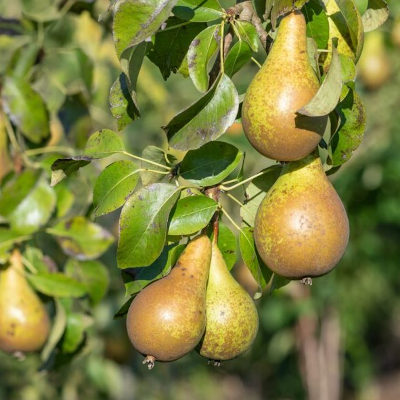The conference pear is a type of fruit that is part of the Pyrus genus and belongs to the Rosaceae family. It is one of the most popular varieties of pears, known for its sweet and juicy flavour, making it a favourite among many fruit enthusiasts. Here are the typical characteristics of a conference pear:
- Shape: The conference pear is usually large and elongated, with a slightly curved, bell-like shape. It has a distinct neck that tapers down to a rounded base.
- Skin: The skin of a conference pear is smooth and thin, and its colour can vary between light green and yellow. Some pears may have patches of brown or russeting, which is a harmless natural browning of the skin.
- Texture: The flesh of the conference pear is creamy-white, fine-grained, and very juicy. It has a soft, buttery texture when ripe.
- Flavour: This variety of pear is renowned for its sweet, aromatic flavour with subtle hints of citrus and spice. The taste becomes even more pronounced as the pear ripens.
- Ripening: Conference pears are usually harvested when they are still firm and green. They require a period of ripening off the tree to develop their characteristic flavour and texture fully.
- Season: The typical season for conference pears is from late summer through the fall, with peak availability in autumn.
- Uses: Conference pears can be enjoyed fresh as a delicious snack, sliced in salads, or used in various culinary applications, including baking, poaching, and making jams and preserves.
- Nutrition: Pears, including the conference variety, are a good source of dietary fiber, vitamin C, and potassium, making them a healthy addition to your diet.
It's worth noting that while conference pears have distinct characteristics, the appearance and taste of fruits can vary depending on factors such as growing conditions, region, and maturity at the time of consumption.
